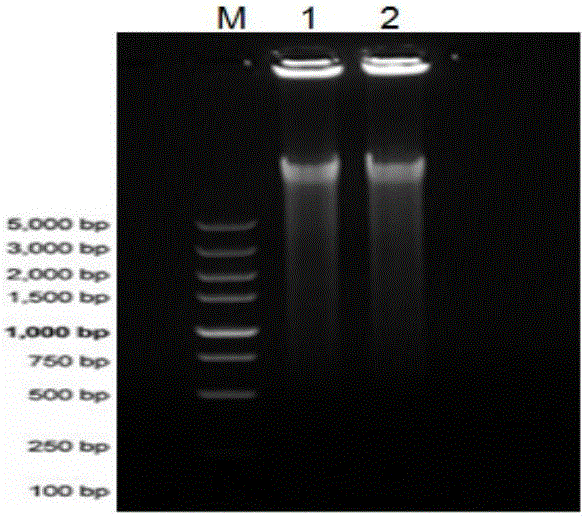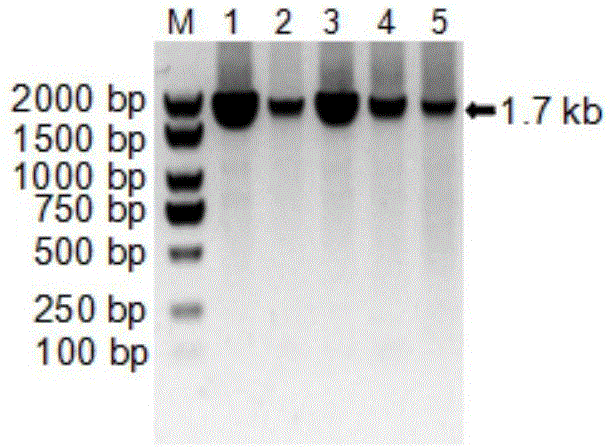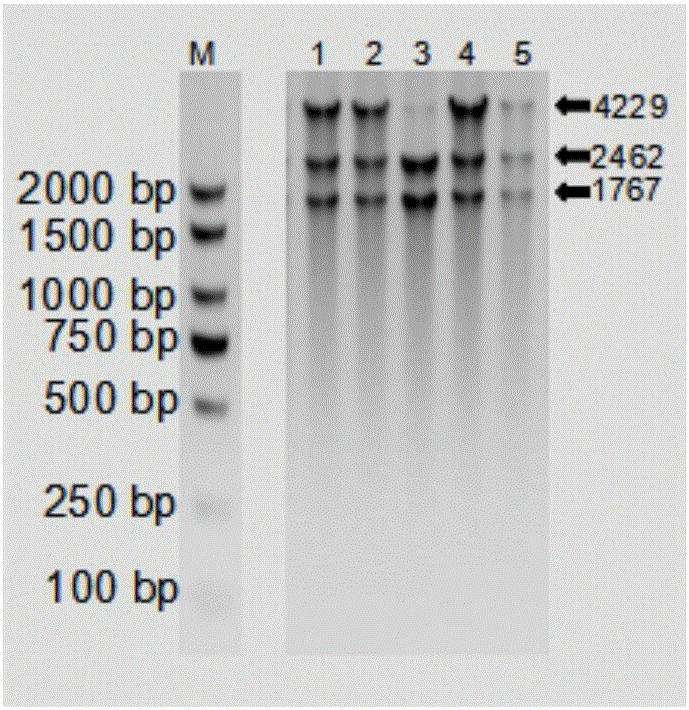PCV2 strain infectious cloning construction kit and method based on in-vitro rolling circle replication
A technology of infectious cloning and rolling circle replication, applied in biochemical equipment and methods, cells modified by introducing foreign genetic material, viruses, etc., can solve the problems of poor template sensitivity, non-specific amplification interference, etc., and achieve simplified separation Process, the effect of ensuring virus specificity
- Summary
- Abstract
- Description
- Claims
- Application Information
AI Technical Summary
Problems solved by technology
Method used
Image
Examples
Embodiment Construction
[0027] first part:
[0028] 1.1 PCV2 genome MPRCA
[0029]MPRCA was performed on PCV2 DNA (GenBank accession number KJ867555) and pUC19 plasmid (2686bp, MPRCA positive control). The system is as follows: Add 4 μL of template or 0.5 μL of pUC19, 20 μL of sample buffer (10 mM Tris-HCl, 0.1 mMEDTA) into the PCR tube, put it into an ABI 2700 PCR instrument at 95 ° C for 3 min, cool to 4 ° C, and then add 20 μL reaction buffer 【330mM Tris-acetate (pH 7.9at 37℃), 100mMMg-acetate, 660mM K-acetate, 1% (v / v) Tween 20, 10mM DTT, 30pmol PCV2-specific upstream primer 5'-CCATATGAAATAAATTACTGAG- 3'(SEQ ID NO.1), PCV2-specific upstream primer 5'-CAGCGCACTTCTTTCGTTTTTCAG-3'(SEQ ID NO.2) and random primer 5'-NNNNNN-3'(SEQ ID NO.3) and 0.8μL phi29DNA polymerization The enzyme (purchased from Thermo Scientific Company) was reacted at 30°C for 18h, then at 65°C for 10min, and finally cooled to 4°C, and the final product of the MPRCA reaction was stored at -20°C.
PUM
 Login to View More
Login to View More Abstract
Description
Claims
Application Information
 Login to View More
Login to View More - R&D
- Intellectual Property
- Life Sciences
- Materials
- Tech Scout
- Unparalleled Data Quality
- Higher Quality Content
- 60% Fewer Hallucinations
Browse by: Latest US Patents, China's latest patents, Technical Efficacy Thesaurus, Application Domain, Technology Topic, Popular Technical Reports.
© 2025 PatSnap. All rights reserved.Legal|Privacy policy|Modern Slavery Act Transparency Statement|Sitemap|About US| Contact US: help@patsnap.com



